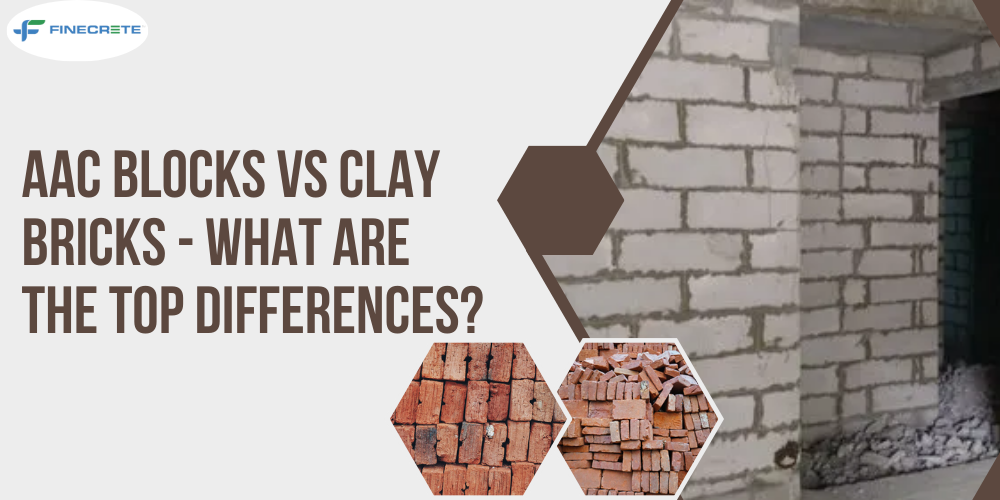AAC blocks and clay bricks are two of the top construction materials used today, each having its own set of advantages and drawbacks. While deciding between these two, it is crucial to understand the key differences that can significantly impact your construction project.
AAC Blocks vs Clay Bricks: What Are The Main Differences?
Here is a detailed comparison of these two construction materials, based on various parameters.
- Availability:
AAC blocks are more easily available. Their production process, largely independent of weather conditions, ensures a steady supply throughout the year. On the contrary, clay bricks often face shortages during the monsoon season, hampering construction timelines.
- Quality:
Quality is a pivotal factor in choosing construction materials. AAC blocks boast uniform and consistent quality, due to their manufacturing process. In contrast, clay bricks might be reliable, but tend to exhibit variations in quality.
- Chemical Composition:
The chemical composition of AAC blocks and clay bricks are responsible for their distinct characteristics. AAC blocks predominantly consist of sand/fly ash (60-70%), which reacts with lime and cement during the manufacturing process. This chemical interaction enhances the structural integrity of AAC blocks.
On the other hand, clay bricks are made from soil containing various inorganic impurities. This leads to potential issues, such as efflorescence.
- Construction Speed:
Fast construction is much valued in the building industry. AAC blocks outshine clay bricks in this aspect. Their larger size, lightweight nature, and ease of cutting into any desired shape contribute to accelerated construction.
In contrast, clay brick construction tends to be slower due to their comparatively smaller size and heavier weight.
- Energy-efficiency:
The environmental impact of construction materials is a growing concern. AAC blocks emerge as an eco-friendly option, offering approximately 30% reduction in air-conditioned load. This energy-saving quality makes them a more sustainable choice compared to clay bricks, which do not provide such efficiency.
- Breakage:
Breakage during construction is an unavoidable factor. AAC blocks exhibit exceptional durability, with breakage rates remaining below 5%. In contrast, clay bricks experience a higher breakage rate, averaging between 10 to 12%. This attribute not only affects the cost but also the overall efficiency of the construction process.
- Carpet Area:
The effective utilization of space, reflected in the carpet area, is a critical consideration. AAC blocks score higher in this aspect due to their lesser thickness, which allows for more spacious interiors. Clay bricks have thicker walls. Thus, a comparatively lower carpet area is what you get.
- Structural Cost:
When it comes to structural cost, AAC blocks present a notable advantage. These help with saving up to 15% on steel, thanks to their lightweight nature and efficient load-bearing capacity. On the other hand, clay bricks do not offer such savings, making AAC blocks a more cost-effective choice.
All in all, AAC blocks emerge as a superior choice over clay bricks in many aspects. However, you should make a choice between the two only after proper consideration of your specific project requirements and priorities. As the construction industry evolves, embracing innovative and sustainable materials such as AAC blocks may pave the way for more efficient and eco-friendly structures.






